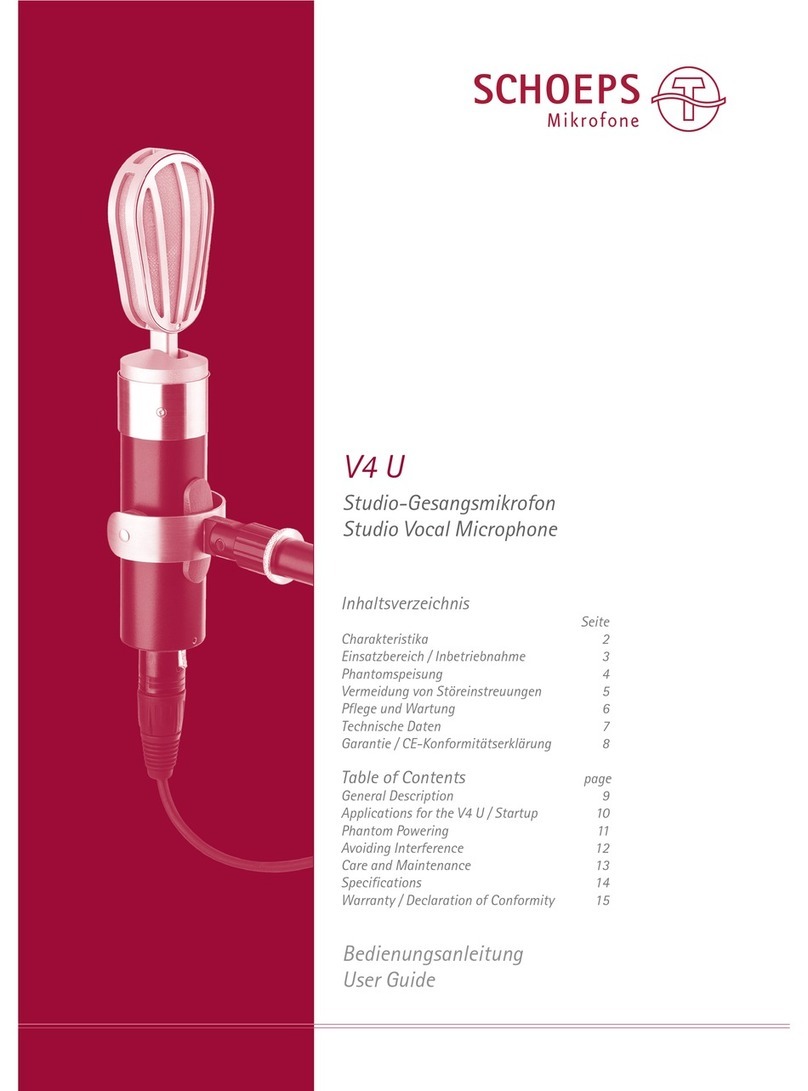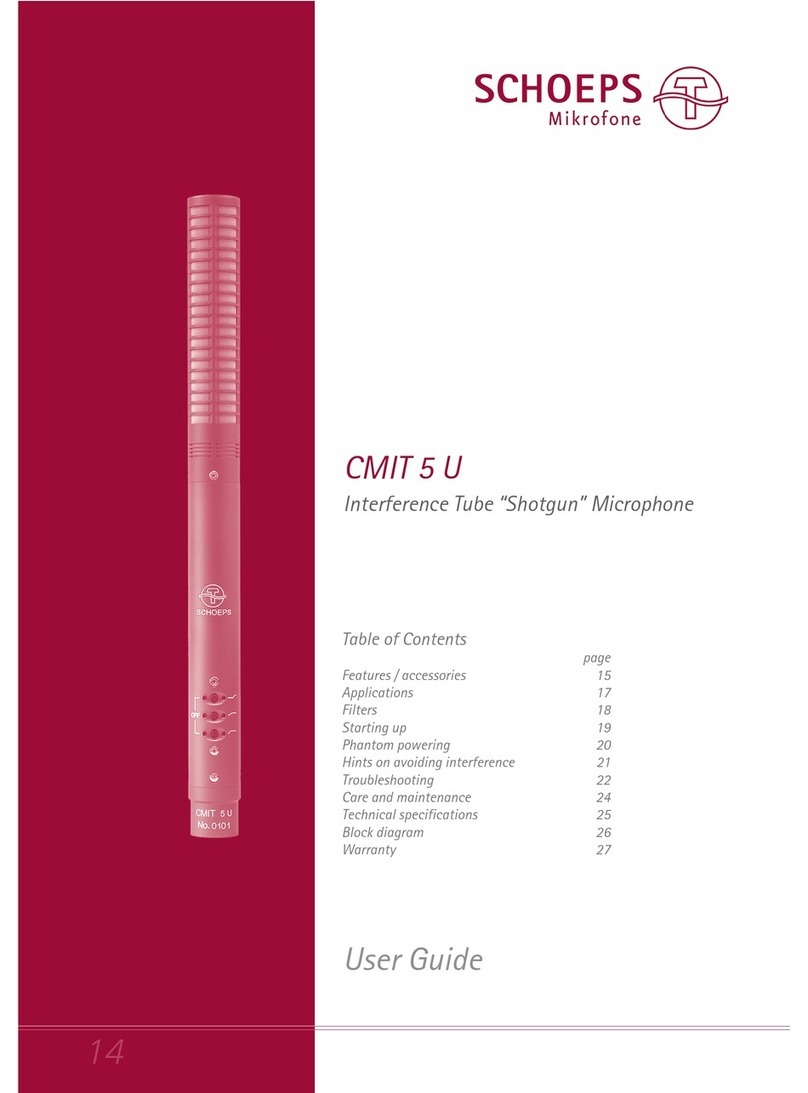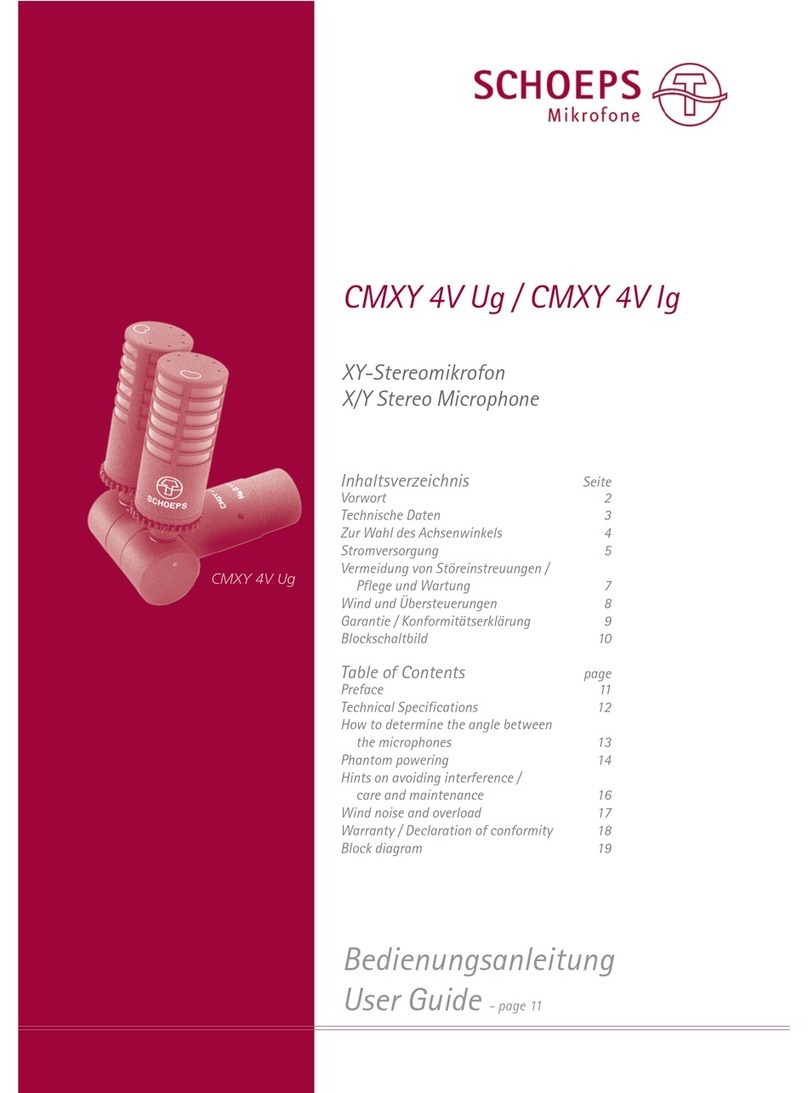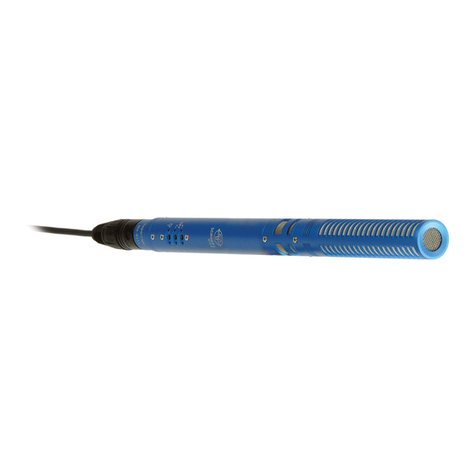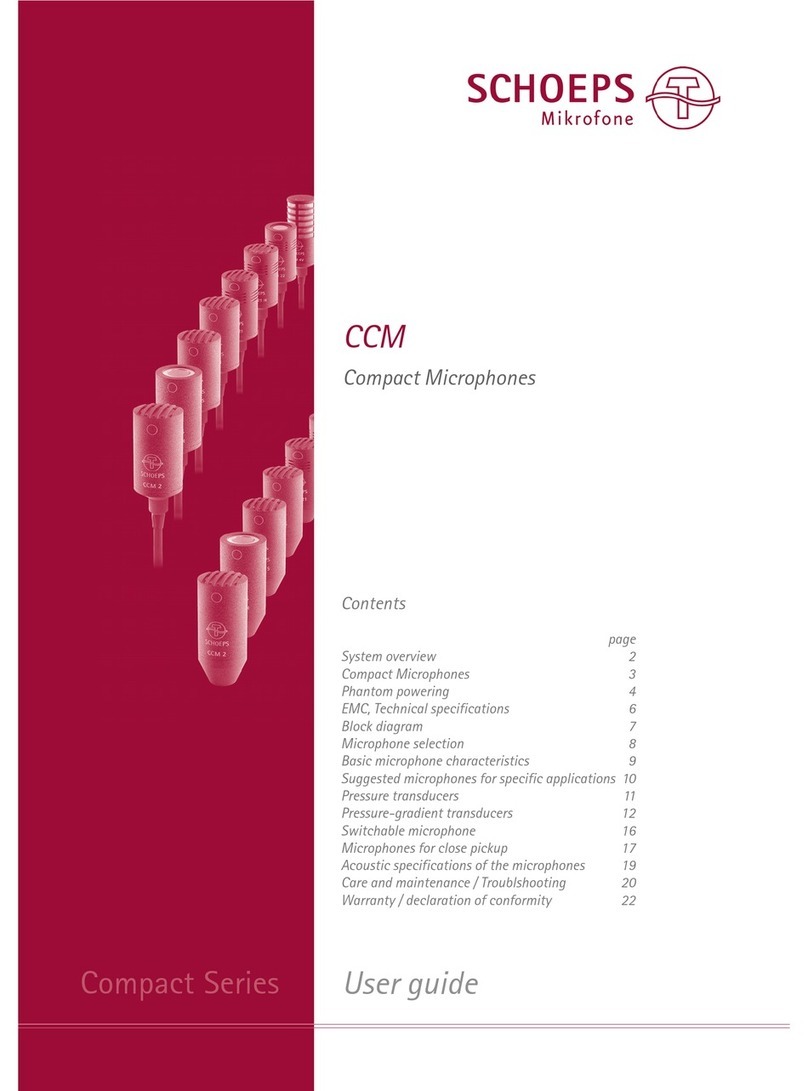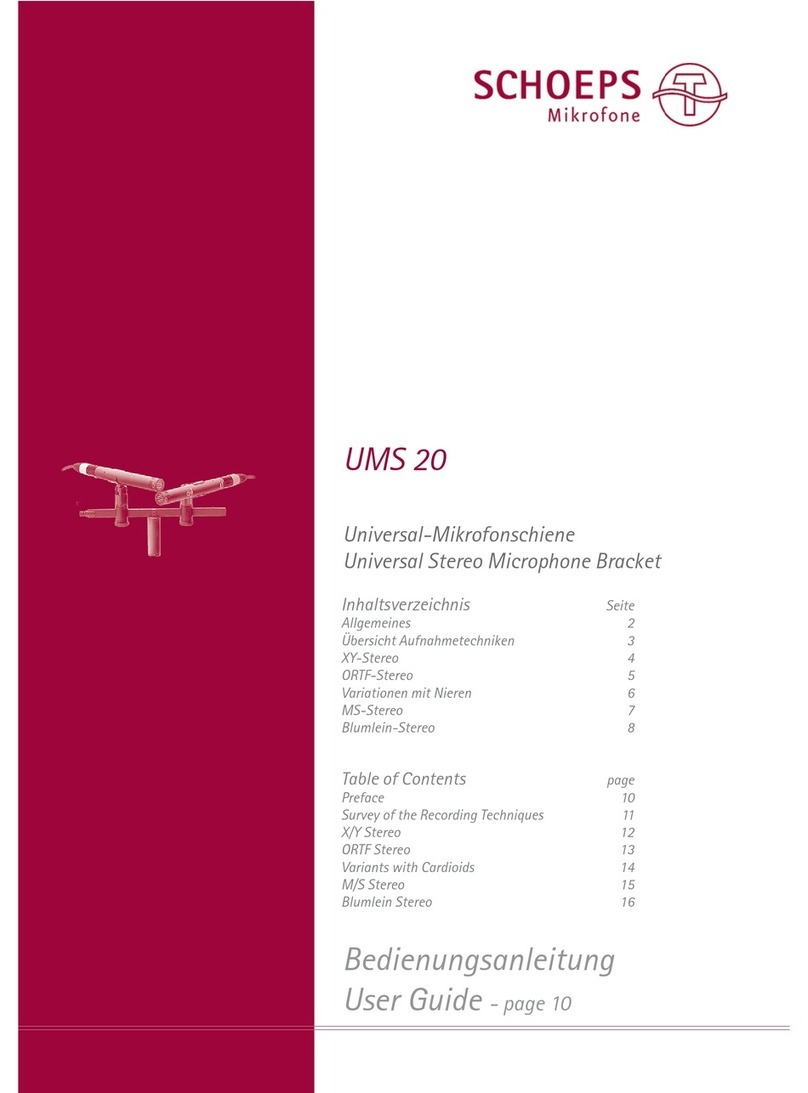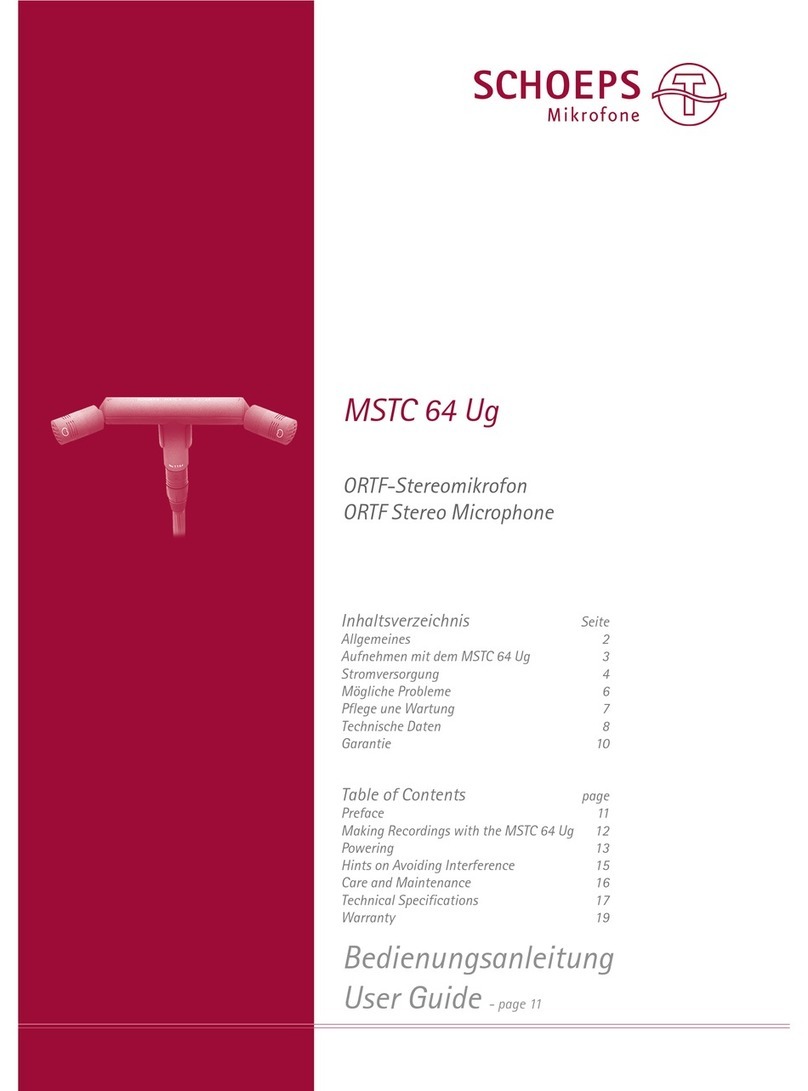greater. The increased output levels can help
to raise a microphone's signal above the input
noise level of the equipment to which it is
connected, especially when sound levels are
low to moderate. However, the overload limit
of that equipment, and of the microphone
itself, will also be reached 5 dB sooner.
CMC ”linear”
CMC microphone amplifiers normally have a
rolloff in response below 30 Hz (20 Hz in the
CMC 6) to guard against infrasonic distur-
bances from various sources such as vibration
and air motion. However, when using pressure
(omnidirectional) transducers, particularly with
digital recording, it can be desirable to pick up
frequencies even lower than 20 - 30 Hz. The
special technology of the CMC microphone
amplifiers makes this possible; on request we
can deliver microphone amplifiers with response
extending as low as 3 Hz.
For live recording, however, some caution is
advised with respect to infrasonics. Since pres-
sure transducers can pick up very low fre-
quencies, ventilation systems in large spaces
(churches, concert halls) or traffic rumble can
create a problem. With pressure gradient trans-
ducers the risk is even greater. They are far
less sensitive to very low frequency sound, but
respond much more strongly to low-frequency
mechanical stimuli such as air currents and
solid-borne noise. Such signals may be below
the audible range, but they can overload pre-
amp inputs, particularly those that have
undersized input transformers.
Phantom Powering (DIN EN 61938)
(formerly DIN 45 596)
”Phantom” powering is a standard method of
providing the operating current for a micro-
phone's circuitry through ordinary two-conduc-
tor shielded cable. Precisely equal DC flows in
both modulation leads, making it ”invisible”
and harmless to most balanced microphones
that don't require such powering (e.g. most
dynamic microphones, including ribbons).
Exceptions are quite rare. The only likely cases
in which standard phantom powering will en-
danger a balanced microphone (e.g. a ribbon)
are if a microphone cable, connector or adapter
is defective or wired in a non-standard way,
such that one modulation lead of the micro-
phone is shorted to ground at DC while the
powering is on. If a microphone is connected
to such a cable with the powering turned on,
impulse current will flow through its coil or
ribbon, possibly causing damage.
Fig. 1 shows the only valid 48 V and 12 V
phantom powering circuit (abbreviations: P48
and P12) that can be realized with resistors as
opposed to a center-tapped input transformer.
This illustration is based on the international
standard document EN 61938, ratified in
1997. Our microphones are developed and
tested with power supplies that conform to
the requirements of this standard. Proper oper-
ation with non-standard power supplies can-
not be guaranteed. Circuit arrangements that
deviate from the standard can cause opera-
tional problems (i.e. distortion or even gaps in
the signal), particularly at high sound pressure
levels or in the presence of strong wind noise.
Such problems may often seem to defy analysis
until their real cause is discovered.
The permissible tolerance of the feed resistor
values as such is ±20%. However, the differ-
ence between the resistors of any one pair
should be less than 0.4% (i.e. 27 Ohms for
48-Volt phantom powering with 6.8 kOhm).
This close matching is necessary to maintain
adequate common mode rejection. It will also
prevent significant DC from flowing through
the primary of the input transformer (if one is
present) and causing distortion or reduced
dynamic range.
A microphone designed for 48-Volt phan-
tom powering could draw as much as 10 mA
according to the standard. A SCHOEPS CMC 5
or CMC 6 will draw about 4 mA even when
Active Accessories are used; this falls well
within the limit set by the prevailing standard.
There are certain commercially available power
supplies, preamplifiers, and mixing desks –
mostly older, but some more recent – which
fail to meet this standard and hence may not
be able to power SCHOEPS microphones ade-
quately. Where doubt exists, equipment should
SCHOEPS GmbH · Spitalstr. 20 · D-76227 Karlsruhe (Durlach) · Tel: +49 721 943 20-0 · Fax: +49 721 943 2050
Phantom Powering
Microphone Amplifiers
5

